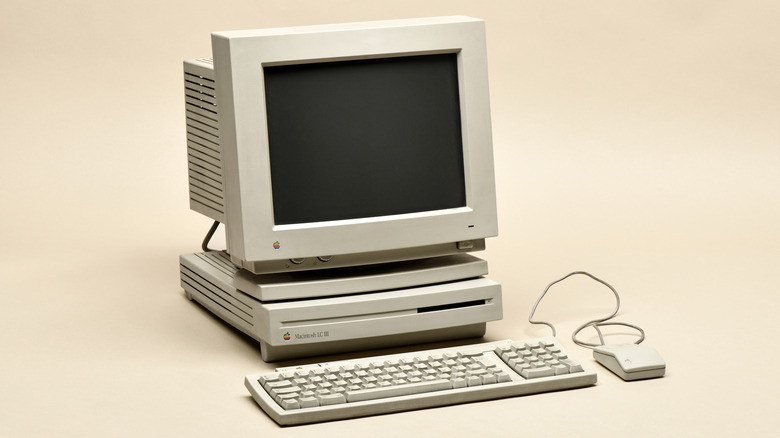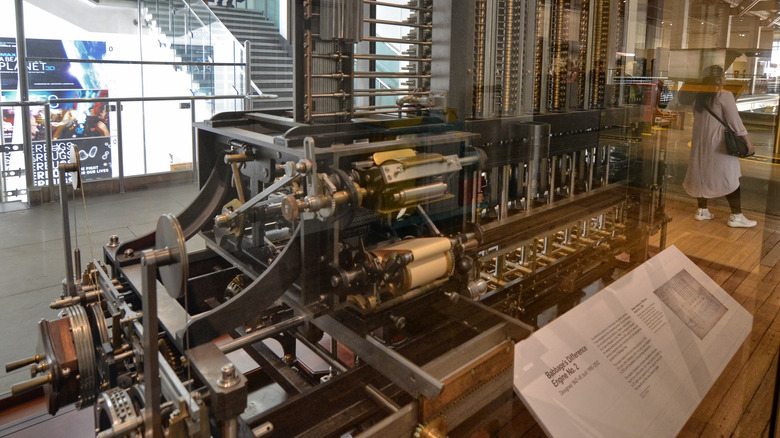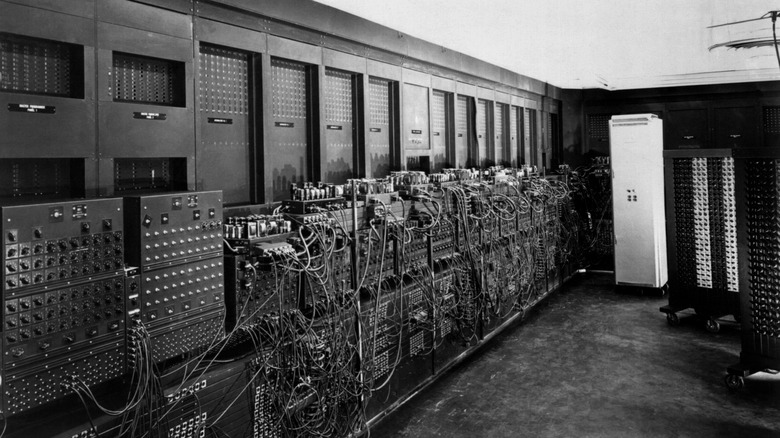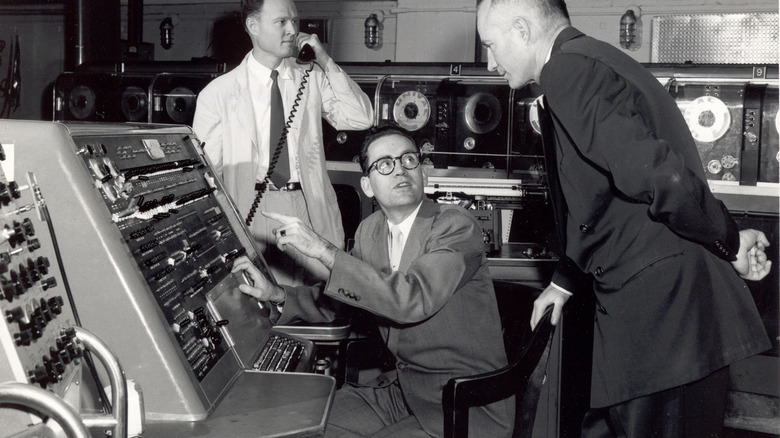Who Built The First Computer?
Computers have a long and complex history, and they've been around far longer than the internet. In the past, computers were used to perform mathematical and logical tasks that were difficult for humans to do quickly. The use of these often large, heavy machines was mostly limited to governments and businesses, as computers certainly weren't mainstream in their earliest days. Eventually, innovators saw how these machines could be applied to a host of other tasks, and the technology became more advanced over time, meaning computers took up less space. The small laptop computers and smartphones we use today are worlds away from the massive computers of yore that required entire dedicated rooms to operate.
Many people contributed to the creation and advancement of computer technology over the past decades, but who created the very first computer? That answer ultimately depends on your definition of what a computer is, as the very first model was mechanical and functioned quite differently than its eventual digital counterpart. Even though these versions were exceedingly primitive when compared to modern technology, they still laid the bedrock for the basic functions that brought us to where we are today.
The first computer was mechanical
The first mechanical computer was designed by a man named Charles Babbage in 1838. He had previously been given a grant by the British government to create his Difference Engine, another proto-computer design, but due to eventual monetary problems, it was never able to fully be developed. After the failure of that machine, he created what was known as the Analytical Engine, which was more advanced than his previous designs.
In theory, the machine would have had four parts: a mill to complete calculations, storage for recorded calculations, a function to read data on punched cards, and a printer to print calculation results. After his previous failure, however, there was no way for him to get funding for this project, and it seemed almost too advanced at the time to be accurately replicated. Though Babbage was far ahead of his time, he laid a foundation for what a computer could look like.
Creation of the first digital electronic computer
The next big leap in computing was digital; it came from Iowa State College physics professor John Vincent Atanasoff and graduate student Clifford Berry in 1942, Iowa State University professor Doug Jacobson explained in an article for The Conversation. The duo named their machine the Atanasoff-Berry computer, which is also referred to as "ABC." This computer used electric power and capacitors and could complete calculations with up to 29 variables. The model could likewise perform a calculation in 15 seconds, which by today's standards is quite slow, but was much faster than the machine's human counterparts.
Atanasoff is also credited with the idea of using 1s and 0s as the method for computers to interpret and communicate data, an innovation that is still used today with modern computer systems. The ABC machine did have some drawbacks, however, such as requiring an operator to be present to fully complete calculations. The device was far from perfect, but future innovations grew from its creation.
The first commercial computer
In 1945, two professors from the University of Pennsylvania, John Mauchly and J. Presper Eckert, patented what many believe was the first true digital computer: the Electronic Numerical Integrator and Calculator (ENIAC). However, it came to light that they heavily borrowed their technology from the ABC, and their patent was later thrown out in court over this dispute, according to the UPenn archives.
The two of them later left the university to work on a commercial computer that could be used by businesses or the government, which became the Universal Automatic Computer (UNIVAC). As stated in the second edition of the book "A History of Modern Computing" by Paul E. Ceruzzi, this computer was first used by the U.S. Census Bureau, U.S. Airforce, and U.S. Army, among others, in the 1950s. By the 1960s, UNIVAC was one among seven other large computer companies, but it had still been the first to create the first commercially available computer.



